Features from the product owner standpoint are explained in the user story and it comprises of the user type, their requirement, and explanation for the same. The user stories are short but with a clear description of the features. This will enable the developers to write the appropriate code meeting the user stories requirements.
Use case template replicates the agile user story exactly.“As a [user] I can [implementsomething] to [benefit something].” Attached reference excel.
Contents
The format for writing User Stories
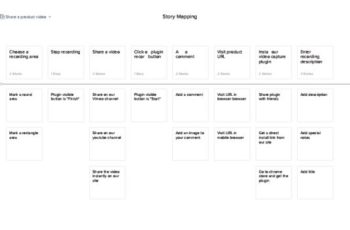
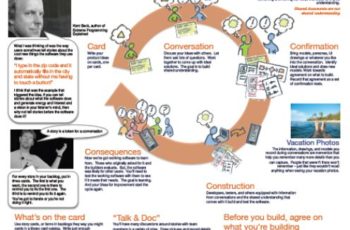
“As a [user] I can [implementsomething] to [benefit something].”This user story explains the way in which a user is looking forward to work with the system to achieve some goal. The user may be any one of the following.
The bank manager or the clerk or the software engineer or the cashier or the customer.
User
One who uses the system for achieving some goal.
- thebankmanager
- the clerk
- the developer
- thecashier
- thecustomer etc.
Achievement
Achievement of the goal is what he gets as the result from the system.
- thebankmanager checks audit report with one click, saving his time.
- the clerk looks for reports, he can save time by performing this action in the system rather than on papers.
- a cashier could look at the total amount in cash register displayed through which he can avoid customers standing for a long time
- a customer can be warned if spent more than a set amount, saving him from all the irritations arising out of his ignorance.
User stories written in a simple structured way helps everyone to understand the instruction and helps them to prioritize their work.This also encourages a healthy discussion amongst all stakeholders.
Components of Agile Story templates

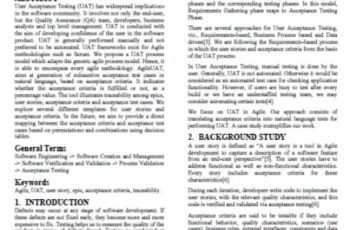
User Story must have the basic four components or statements mentioned below.
- <A name for the user story for identification>
- As a.<type of user>
- I must.<Perform an action>
- So that.<A goal is achieved>
User story includes the validation steps — consecutive steps aretaken to track whether the working requirement is in line with the user story. When I <execute a deed>, this occurs <description of the deed>.
User stories may also include and these are purely optional.
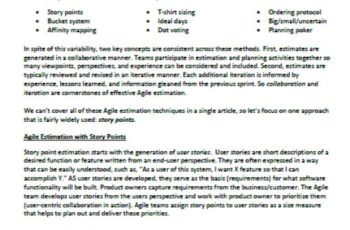
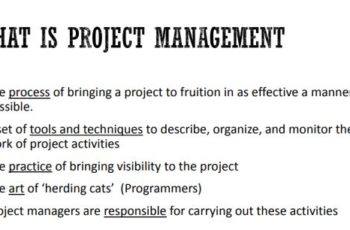
- A user story ID. A unique number given to each user story
- The user story value and effort estimation. Value is how helpful a user story may be to the organization creating that product. The effort is the level of difficulty in creating that user story.
- As user story can be created by anyone in the team their name can be included
A typical user story card shows the main explanation on the front side. The back side showing how to confirm that the requirement is working correctly after the development team has formed the requirement.
User story title. Transfer money between accounts
As a customer,
I must review fund levels in my accounts and transfer funds between accounts
So that I can complete the transfer and see the new balance in the relevant accounts.
Acceptance Criterion 1
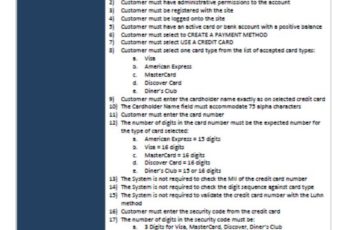
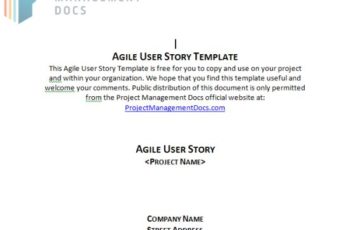
Given that the account is credible
And the transaction is valid
And the fund level is sufficient,
When the customer transfer funds between accounts
Then ensure the amount is transferred
And ensure fund is debited from one account
And ensure thefund is credited to another account.
Acceptance Criterion 2
Given that the account is insolvent
And the fund level is nil,
When the customer transfer funds between accounts
Then ensure the refusal communication is displayed
And ensure transaction is canceled
How to fill up each section in agile story template
The typical agile user story template is divided into 3 main divisions. the heading, the explanation (or User Stories framework), the criteria for acceptance.
- The heading is the reference for any user story which must be short ranging between 3 – 10 words.
- The description part explains the user story in detail. The reasonable template in a user story.
- The criteria for acceptance determines whether the goal has been achieved.
- The heading is written first.
It should let people in the team explain the uniqueness of the story preserving the length to fit the post it to be filled with a marker.
- When writing stories, try to be specific than using the generic term of “user”.
As a consumer…
As a manager…
As an editor in chief…
As a technician…
As a programmer…
- Then inscribe the description.
Description are action focused
as a <type of user>, I must<perform some task> so that I can <achieve some goal>.
Whenever the description exceeds the limit (beyond the size of a catalog card), please modify user story accordingly.
Split into multiple smaller stories.
A user story is written to reassure collaboration, always intend to write the required detail only.
The Purpose will be defeated if you document everything.
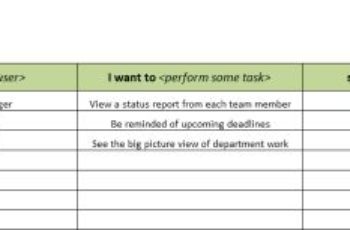

- Acceptance criteria
Must be included as a test case or described as “done,”if thus helping to make user stories expectation simpler to recollect.
Once the team is prepared to work, they must discuss with the product owner regarding that user story.
Including the acceptance criteria in this stage will enable the team to understand the term done.
Once the work is in progress the team can discuss new criteria for acceptance with the product owner, which fetches another meaningful
acceptance criteria.
A detaileddiscussion about the customer need can be achieved.
- The title story “card” in the General section
- “Description” in the Notes section
- “confirmation” under Acceptance Criteria.
Epic template consists of the following sections
Epics are large user stories that wait on the product backlog until the team explains them.
- User story syntax consists of the feature description in one simple sentence, “As a [user] I can [implementsomething] to [benefit something].” This is the “epic” on the product backlog.
- Advantages to be achieved through the execution of the feature. “why bother?” can be answered.
- This is the best section to include if your feature can provide support to many business process scenarios.Making note of the scenarios help the requirements procedure to be associated with how the new software will be used by the people.
- Features list. The features to be included in the “scope” of the epic must be identifiedand must be written in the syntax of the user story.to logically make the product backlog components and fragmented into many small user stories.
- Integrate with the existing functionality. To build new feature over and above the existing functionality is a regular occurrence.
- Business stakeholders either validate the list of effects considered to be true(or canceled where it is false).
- Few features may be good to have but such features may not be important and thus makes the product backlog outdated.
Out of scope is a beloved segment included by people coming from the traditional background.This segment describes what is actually not done. Still, this helps in keeping the team on track to deliver. As they will know the difference between what is required and what is not required.
What all the things you should avoid putting inside an agile story template
A lot of details added in a description weakens the collaboration
A user story is a “talking points”, a “to-do list”, or a “riddle” keeping this in mind the discussion about the topic should be carried out Only by working as a team, the user story works as an agile tool otherwise it is just a set of dialogues exchanged.
A lot of details added in a description might completely miss the required details in the acceptance criteria.
Acceptance criteria must be understood by the team to effectively write a user story.The knowledge is required to write the right user story. Acceptance criteria must be complete enough to express the fulfillment of the user story, still, it must remember to keep it short and not crush collaboration. The critical part in writing a User story is to writeappropriate acceptance criteria.
Not mentioning the customer/product owner
The customer/product owner is the key member of the team in an agile atmosphere. They’re the decisive authority on what does or does not add value to the product.
Acceptance criteria and test cases must not be confused
Acceptance criteria and test cases are essential for a user story. Acceptance criteria will let know “the completion of the story.” Test cases will let know the ways and steps to test.

